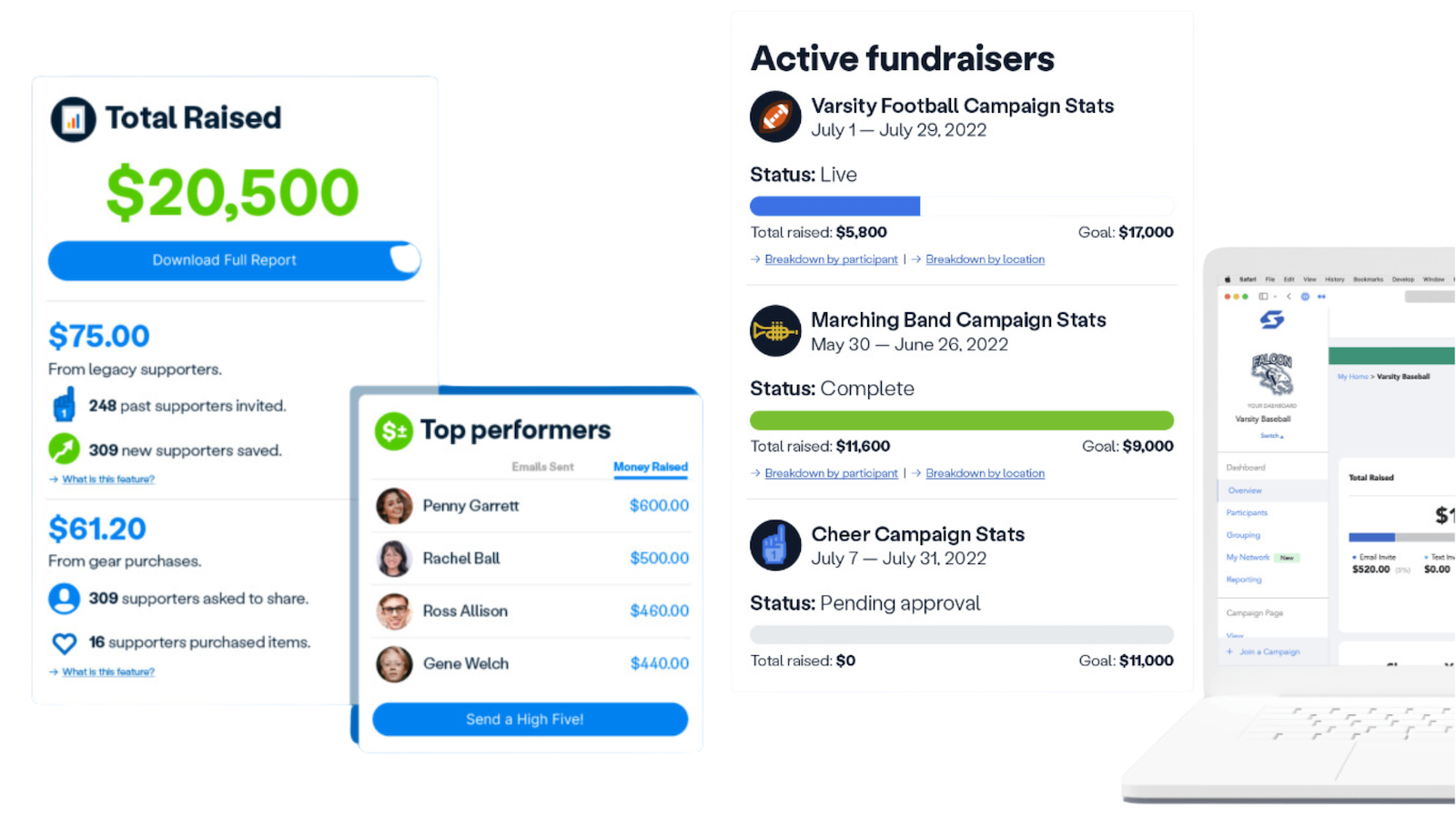Are you struggling with your sales and marketing teams working in silos, affecting revenue growth? Studies show that businesses that align these two key departments can see a 32% rise in their annual revenue.
This blog post will guide you through the concept of Smarketing, illustrating how seamless alignment between sales and marketing units can effectively boost your company’s earnings.
Key Takeaways
- Smarketing, the alignment of sales and marketing teams, can boost your company’s revenue by 32% annually.
- Smarketing helps businesses find new customers and make existing customers happy through collaboration between sales and marketing.
- Without smarketing alignment, businesses face challenges such as lead generation issues, ineffective utilization of sales content, difficulties in demonstrating ROI, inefficient workflows, and struggles with customer retention.
- Steps to integrate smarketing include assessing current alignment levels, promoting organizational buy-in, encouraging communication and collaboration between teams, creating a service-level agreement (SLA), and integrating sales and marketing software.
What is Smarketing and Why Do You Need It?

Smarketing is a smart mix of sales and marketing. It helps grow your business faster. Two teams join forces to talk about ways to find new customers. They also look at how they can make current customers happy.
The profits show this works! Companies that use Smarketing see a 32% rise in their cash flow each year. That’s big money for your bottom line! Plus, many leaders say their brands perform better when sales and marketing work together.
Can you see why Smarketing helps so much? When the two teams align, people who want to buy from you have a smoother journey. The process becomes less complex for them. This is why most firms need it.
Common Challenges Faced Without Smarketing Alignment

Without smarketing alignment, businesses often face challenges such as lead generation and handoff issues, ineffective utilization of sales content, difficulties in demonstrating ROI, inefficient workflows, and struggles with customer retention.
Lead generation and handoff issues
Lead generation is a big job. It’s all about finding new people who may want what your business offers. Handoff issues can happen when these leads move from the marketing team to the sales team.
This is often where problems start.
Smarketing comes in here to help resolve these issues. The main goal of Smarketing is to improve how sales and marketing teams work together. This makes sure that qualified leads don’t get lost or ignored during handoff process between these two key groups.
With Smarketing, both teams have a clear idea of their roles and responsibilities regarding leads. They learn to share important customer knowledge and use it while nurturing leads along the buying journey.
By doing this, businesses are more likely to grow their profits by increasing revenue.
Sales content utilization
Sales teams need the right tools and content. Marketing teams can help with this. They create sales sheets, blog posts, emails, and more for sales reps to use. These tools talk about the great things your product or service does.
Customers get excited after reading them and want to buy from you! This boosts revenue growth. When both teams are in sync, they better use these resources which helps win over new leads and close deals faster.
Demonstrating ROI
One of the common challenges faced without sales and marketing alignment is demonstrating return on investment (ROI). It can be difficult to measure the impact of marketing efforts on sales revenue without proper alignment between teams.
However, research shows that highly-aligned organizations experience a 32% year-over-year revenue growth. By aligning sales and marketing activities, companies can better track customer interactions and attribute them to specific campaigns or strategies.
This allows businesses to use data-driven insights to make informed decisions about their marketing investments and demonstrate how their efforts contribute to overall business success.
Streamlining workflows
Streamlining workflows is a key benefit of sales and marketing alignment. When the two teams work together effectively, they can eliminate inefficiencies and optimize processes for better results.
By sharing information and collaborating on tasks, sales and marketing can ensure that leads are smoothly handed off from one team to another, without any gaps or delays. Additionally, with aligned workflows, both teams can work towards common goals and objectives, resulting in increased productivity and faster revenue growth.
Research shows that organizations with strong alignment experience a 32% year-over-year revenue growth. So, by streamlining workflows through sales and marketing collaboration, companies can achieve higher efficiency and boost their overall performance.
Customer retention
Customer retention is a key factor in boosting your revenue. It’s important to keep your existing customers happy and satisfied so that they continue to do business with you. Research shows that highly-aligned organizations experience a 32% year-over-year revenue growth, which can be attributed to their focus on customer retention.
By aligning sales and marketing efforts, you can better understand your customers’ needs, provide them with personalized experiences, and build long-lasting relationships. This will not only help you retain customers but also increase their lifetime value, leading to higher profits for your business.
Steps to Integrate Smarketing into Your Business
Assess the current level of alignment between sales and marketing teams, promote organizational buy-in, encourage communication and collaboration, create a service-level agreement (SLA), and integrate sales and marketing software.
Assess current level of alignment
To integrate smarketing into your business, it’s important to first assess the current level of alignment between your sales and marketing teams. This involves evaluating how well they are working together, communicating, and collaborating towards common goals.
Look at factors such as lead generation processes, customer knowledge sharing, and overall integration of sales and marketing efforts. By understanding where your team currently stands in terms of alignment, you can identify areas for improvement and take necessary steps to enhance collaboration and boost revenue growth.
According to research, highly-aligned organizations experience a significant year-over-year revenue growth of 32%.
Promote and get organizational buy-in
To successfully integrate Smarketing into your business, it’s important to promote and gain buy-in from the entire organization. By emphasizing the benefits of sales and marketing alignment, such as improved lead generation and increased revenue growth, you can get everyone on board with this strategy.
Highlighting success stories and statistics, like how highly-aligned organizations experience a 32% year-over-year revenue growth, can help convince stakeholders of the value of Smarketing.
Encouraging open communication and collaboration between teams will also foster a culture of cooperation and support for this initiative. Remember, by promoting and obtaining organizational buy-in for Smarketing, you set your company on a path towards enhanced profitability and overall success.
Encourage communication and collaboration
To achieve sales and marketing alignment, it’s crucial to encourage communication and collaboration between the two teams. When sales and marketing teams work together, they can share valuable insights and knowledge about customers, which leads to better lead generation and nurturing processes.
By collaborating, they can align their strategies more effectively to attract, qualify, and nurture leads. This collaboration also helps in streamlining workflows and ensuring that everyone is on the same page when it comes to goals and objectives.
According to research by Freshworks, leaders believe that aligning sales and marketing functions can boost brand performance. So, fostering open lines of communication and promoting collaboration between these teams is key for success in today’s competitive market.
Additionally:
– Highly-aligned organizations experience a 32% year-over-year revenue growth.
– Better alignment between sales and marketing teams leads to bigger profits for companies.
– Creating a reciprocal relationship between sales and marketing teams can enhance lead generation efforts.
Create a service-level agreement (SLA)
To achieve true alignment between sales and marketing teams, it is important to create a service-level agreement (SLA). An SLA outlines the expectations, responsibilities, and targets for both sales and marketing departments.
It helps define common goals and ensures everyone is on the same page. By establishing clear metrics and benchmarks in the SLA, you can measure progress and hold each team accountable.
This agreement fosters collaboration, communication, and coordination between sales and marketing. With an SLA in place, your business can work towards better lead generation, improved conversion rates, increased revenue growth, and overall success.
Integrate sales and marketing software
Integrating sales and marketing software is a crucial step in achieving smarketing alignment. By connecting the tools and systems used by both teams, you can enhance collaboration, streamline workflows, and improve data sharing.
This integration allows for better lead tracking and management, ensuring that leads are effectively nurtured throughout the customer journey. It also enables more accurate reporting and analysis of marketing efforts, leading to smarter decision-making and improved ROI measurement.
With integrated sales and marketing software, your business can operate more efficiently and effectively, ultimately boosting revenue growth.
Best Practices for Achieving True Smarketing Alignment
To achieve true Smarketing alignment, it is important to define common terms and goals, create a single customer journey, coordinate content marketing efforts, use consistent messaging, and share reporting and data.
Define common terms and goals
In order to achieve effective sales and marketing alignment (also known as smarketing), it is important to define common terms and goals. This means that both the sales and marketing teams should have a shared understanding of key terminology, such as leads, prospects, conversions, and revenue.
By having clear definitions in place, everyone can work towards the same objectives.
Setting common goals is also crucial for successful smarketing alignment. Both teams should have aligned targets and metrics to measure their performance. For example, they can aim to increase lead generation by a certain percentage or improve conversion rates.
With shared goals, the sales and marketing teams can work together towards achieving these objectives and ultimately drive revenue growth.
Create a single customer journey
Creating a single customer journey is an important step in aligning sales and marketing teams. By mapping out the entire customer journey, from initial contact to purchase and beyond, both teams can gain a deeper understanding of the customer’s needs and preferences.
This alignment allows for consistent messaging and personalized interactions at every touchpoint. Research shows that companies with a well-defined customer journey experience 54% higher conversion rates.
By creating a shared vision of the ideal customer experience, sales and marketing teams can work together more effectively to drive revenue growth.
Coordinate content marketing
To achieve true smarketing alignment, it is important to coordinate content marketing efforts between the sales and marketing teams. This means working together to create and distribute content that targets the needs and interests of potential customers.
By coordinating content marketing, both teams can ensure that their messaging aligns with their shared goals and objectives. This helps to enhance lead generation efforts, attract qualified leads, and nurture them throughout the customer journey.
Research shows that businesses with highly-aligned sales and marketing teams experience significant revenue growth year after year. So, by coordinating content marketing, companies can maximize their revenue potential through effective collaboration between sales and marketing.
Use consistent messaging
Consistency is key when it comes to sales and marketing alignment. By using consistent messaging, both teams can ensure that they are speaking the same language and conveying a unified brand image.
This is important because customers need a clear and cohesive message from start to finish. Research shows that businesses with strong alignment between sales and marketing see an impressive 32% year-over-year revenue growth.
When sales and marketing teams use consistent messaging, they can work together more effectively to attract and retain customers, ultimately boosting company revenue. So, make sure your sales and marketing messages align for maximum impact.
Share reporting and data
Sharing reporting and data is a crucial component of sales and marketing alignment. By sharing information about leads, customer behavior, and campaign performance, both teams can make more informed decisions.
This collaboration helps in identifying patterns, trends, and opportunities to optimize strategies for better results. Research shows that highly-aligned organizations experience significant year-over-year revenue growth.
When sales and marketing teams share reporting and data, they can identify areas for improvement and work together to achieve common goals. By analyzing data together, the teams can align their efforts towards enhancing lead generation, increasing revenue, and ensuring overall business success.
Success Stories of Sales and Marketing Alignment
HLC and LinkedIn Sales Navigator achieved significant revenue growth through their successful sales and marketing alignment, while SuperOffice CRM experienced increased profitability by integrating their sales and marketing efforts.
HLC and LinkedIn Sales Navigator
HLC, a technology company, achieved sales and marketing alignment with the help of LinkedIn Sales Navigator. By using this tool, HLC’s sales team was able to access valuable insights about potential leads and customers on LinkedIn.
With relevant information at their fingertips, they could personalize their outreach and build stronger relationships. The marketing team also benefited by identifying target audiences more effectively and creating content that resonated with them.
As a result of this alignment and collaboration between sales and marketing, HLC experienced a significant increase in revenue growth year-over-year. This success story showcases the power of integrating tools like LinkedIn Sales Navigator to drive sales and marketing alignment for improved business performance.
SuperOffice CRM
SuperOffice CRM is a powerful tool that can greatly assist in achieving sales and marketing alignment. With its user-friendly interface, it allows both teams to easily share information, track customer interactions, and collaborate on strategies.
SuperOffice CRM provides valuable insights into customer behavior and preferences, enabling businesses to personalize their marketing efforts and deliver targeted messages. By integrating sales and marketing data in one centralized platform, SuperOffice CRM helps streamline workflows and improve lead generation processes.
This leads to increased revenue growth for organizations that embrace Smarketing alignment. In fact, research has shown that highly-aligned companies experience a significant 32% year-over-year revenue growth.
Conclusion: The Importance of Smarketing for Boosting Revenue
In conclusion, smarketing is crucial for boosting revenue in businesses. By aligning sales and marketing teams, companies can improve lead generation, nurture prospects effectively, and enhance customer knowledge.
The reciprocal relationship between sales and marketing leads to increased profitability and brand success. With smarketing alignment strategies in place, businesses can optimize revenue and achieve higher levels of success.
FAQs
1. What is smarketing?
Smarketing refers to the alignment and collaboration between sales and marketing teams to achieve common goals and drive revenue growth.
2. How can sales and marketing alignment boost revenue?
When sales and marketing teams work together, they can create a seamless customer journey, improve lead generation, increase conversion rates, and ultimately drive more revenue for the company.
3. What are some ways to align sales and marketing teams?
Some ways to align sales and marketing teams include regular communication, shared goals and metrics, joint planning sessions, clear role definitions, and feedback loops for continuous improvement.
4. What are the benefits of having aligned sales and marketing teams?
Benefits of having aligned sales and marketing teams include improved lead quality, shorter sales cycles, increased customer satisfaction, better overall business performance,and higher revenue growth potential.
5. How can businesses measure the success of smarketing efforts?
Businesses can measure the success of their smarketing efforts by tracking key metrics such as leads generated through marketing campaigns that convert into actual customers closed by the sales team or analyzing revenue growth attributed to collaborative strategies implemented between both departments.




